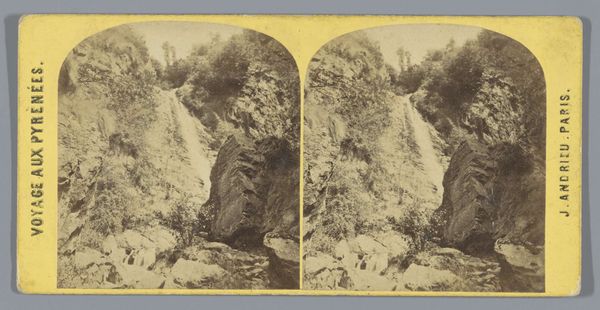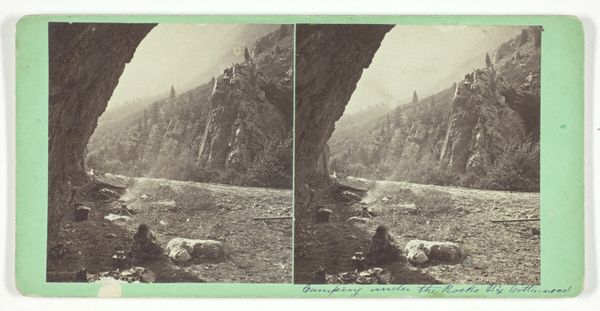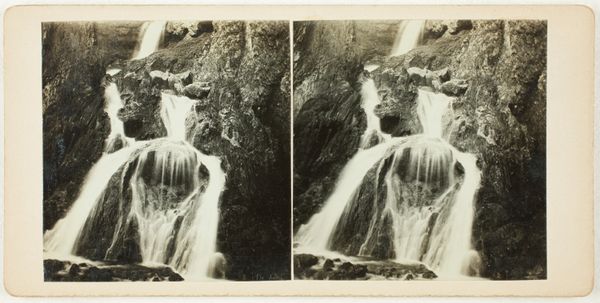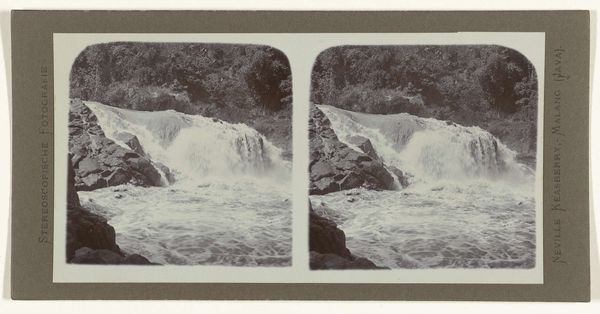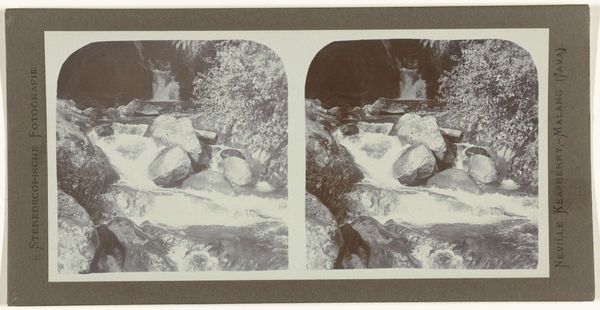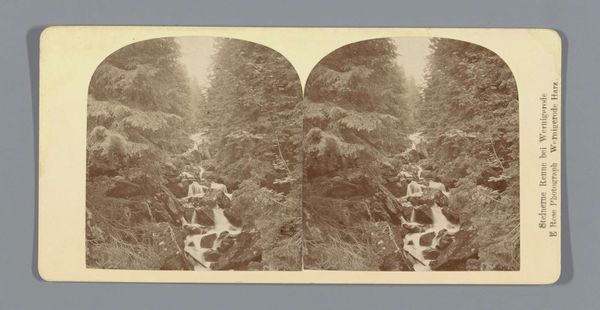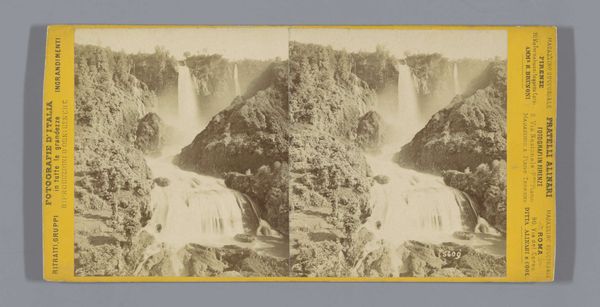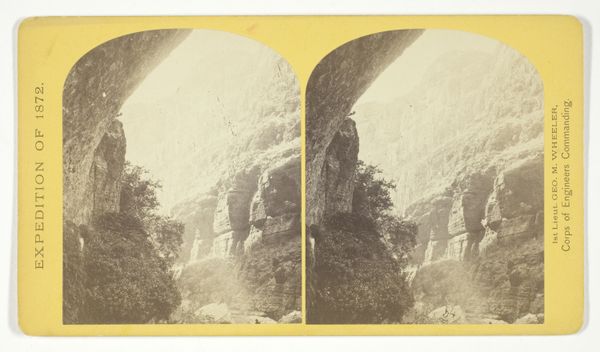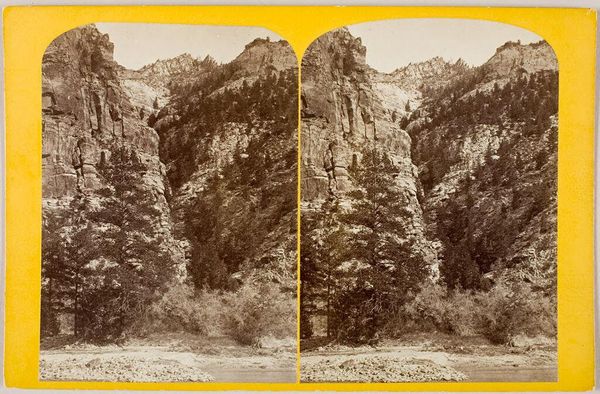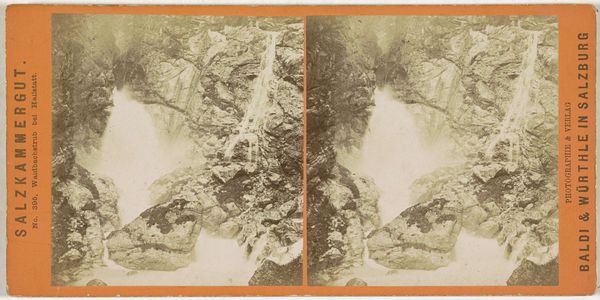
photography
#
16_19th-century
#
landscape
#
photography
#
realism
Dimensions: height 85 mm, width 170 mm
Copyright: Rijks Museum: Open Domain
Editor: So, this stereoscopic photograph is titled *Kloof van de Hourat*, created by Jean Andrieu sometime between 1862 and 1876. It has such a stark, almost brutal feel to it with those dark rocks. How do you interpret this work? Curator: Immediately, the image speaks to me of the Romantic sublime, but with an interesting tension. Look at how the chasm and the torrent of water symbolize the untamed power of nature, a recurring theme in Romanticism, wouldn’t you agree? Editor: Absolutely. The water, in particular, has that quality. Curator: Yet, observe the careful composition. The photographer has framed the chaotic natural elements within a structured view. Also notice that constructed wall on the left side. The road, perhaps, as a cultural mark? It suggests human efforts to contain and comprehend the wilderness. What symbolic weight might that tension between wildness and order carry? Editor: Hmm, it is as though nature is something to be controlled… or at least viewed safely. I am thinking of Victorian notions of progress here, maybe even social hierarchy. Curator: Precisely. And think about the stereoscopic format itself. It invites the viewer into this seemingly perilous space, yet at a safe distance, a curated experience of the sublime. Does this say something about our inherent desires for risk and security, and how photography served to mediate them? Editor: It’s fascinating to consider how a landscape photograph embodies more than just the scenery it depicts. Thanks, I would have never considered those details. Curator: Indeed! Images always operate on multiple layers. Thinking about those symbolic tensions certainly adds depth to our viewing.
Comments
No comments
Be the first to comment and join the conversation on the ultimate creative platform.

